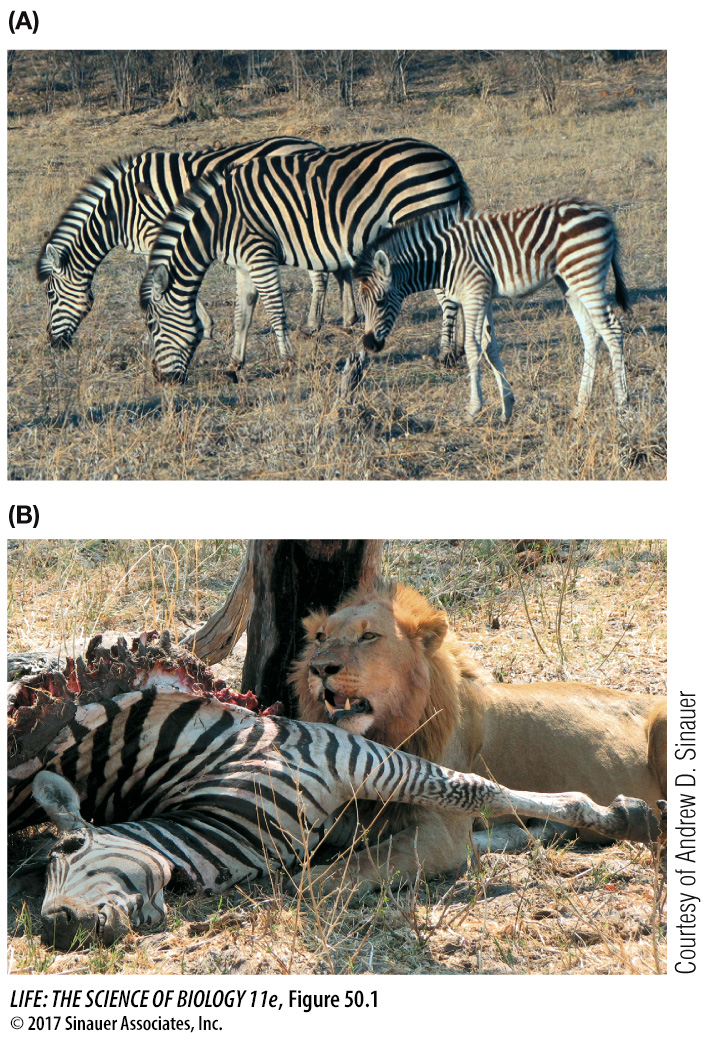key concept
50.1
Food Provides Energy As Well As Materials for Biosynthesis
key concept
50.1
Food Provides Energy As Well As Materials for Biosynthesis
Animals are heterotrophs—they derive their nutrition from eating other organisms. In contrast, autotrophs (most plants, some bacteria, some archaea, and some protists) can use solar energy or inorganic chemical energy to synthesize all of their components. Of course, some *plants are also heterotrophs.
*connect the concepts Carnivorous and parasitic plants are discussed in Key Concept 35.5.
focus your learning
Fats, carbohydrates, and proteins in food provide energy.
Energy is stored in animal bodies as glycogen and fat.
Some small organic molecules required for biosynthesis, including essential amino acids and fatty acids, must come from food.
Vitamins are organic compounds that the animal cannot synthesize but are required for healthy cell function.
Animals require a variety of mineral nutrients.
Directly and indirectly, heterotrophs take advantage of—
